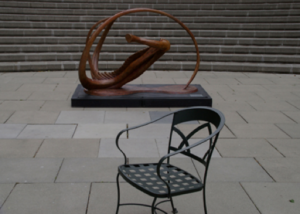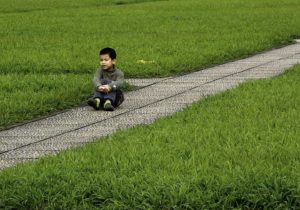PHOTOCLUBS
For better or whatever I’ve hitched my wagon to the photoclub community. I’ve been a member of the Adelaide Camera Club (http://adelaidecameraclub.org.au) for the past 4 years. Recently I was also invited to join Printworks, a group of august photographers whose raision de’etre is to participate in overseas print salons. Prior to that, while an expat in Singapore, I was a member of the ANZA (Australian and New Zealand Association) Click-Club, a delightful “click and giggle” group who provided me with my inaugural and influential competition club experience. Before that I liked to capture images and kind of hoped I’d get better at it.
This world of amateur photography clubs can be captivating, compelling, irksome, useful or just plain frustrating; sometimes all of these in the same night. It’s a challenging environment for the uninitiated – at times myopically competitive, largely on the elder side of 55, catering for diverse standards and styles, slow to reveal its charms and benefits. Just about any really famous photographers never set foot inside a camera club, unless you get to the Magnum stage.
But given a fair go, stroked a little under the chin and warmed over a glass of good red wine, a camera club environment will repay the effort to those who persevere. To a significant extent, I credit a meteoric improvement in my images over 6 years to the competitive and sharing environment in my clubs. Of course it helps to be driven by a desire for self-expression, and a need to be the best you possibly can – even though your measurement of success may at times be determined by a competition judge, who critiques, confabulates and confuses at the front of the room as he or she attempts to grade one hundred and twenty images in a night.
And perhaps more importantly, I have made some really good friends who are also striving to be the best they can, and I feel like a fully-fledged member of a larger community. We all like to belong, nes’t-ce pa?
~
I believe, as many do, that PHOTOGRAPHERSneed to find their own PERSONAL VOICE. But we are all on an improvement curve, and reproducing a master’s style or constraining our work to the dictates of judge’s critique are great ways of accelerating up the incline. Much has been written on developing a personal style, but recently a new acquaintance (from a camera club!) sent me a thought-provoking essay on the artists of Dafen in China. I thought it provided an insightful metaphor on the need to find one’s mojo, and so commend the article for your personal appropriation.
http://davidduchemin.com/2018/05/leaving-dafen-from-craft-to-art/
This essay ends with the following admonition: Don’t camp out on craft and copy if you long for more. Yo!
After all, we photographers are ultimately trying to produce our profoundly personal photographic art. But for what end? Indeed what should we do with all those millions of bits of data stored on our hard drives or up in the ethereal clouds. How and why should we communicate the product of our fotographic tom-foolery?
And what is art anyway?
Raindrops on roses – whiskers on kittens – large painted faces – stories from Dickens – brown paper packages tied up with string – and lots and lots of money as only real art can bring. Plato admired art for its great inspirational power, but at the same time detested it because he deemed it representational, imitative, only giving the appearance of reality, and because artists have “no grasp of the truth”.
Kristeller helpfully argued that art is painting, sculpture, architecture, poetry or music, and then went out for a beer. Weitz thought that art was indefinable and a guy called Wittgenstein thought that defining it would stifle creativity and lead to art not existing. Finally a guy with the apt name of Dickie contended that a work of art is an artifact upon which some person(s), acting on behalf of the world of art (“the artworld”), confer(s) upon the object de art the status of a candidate for appreciation as a piece of art. Yeah right.
Personally, with reference to the following image of a piece of art found in a public space in Seattle, U.S.A., I think an iron chair is a much better piece of art than a long nosed giant wooden earwig trying to sniff its own testicles. And a lot more functional.
On another note about personal style and influences, I recently attended a workshop by Adam Williams (https://www.australianphotographer.com), who has developed a very personal landscape style. I appreciated how he connected his personal story and battle with depression with the landscape images he creates, his photoshop skills, and his influences, including the romantic landscape painters such as Albert Beirstadt (www.albertbierstadt.org), a favourite of mine. Talk about painting with dramatic light.
And continuing the colour series. This time, GREEN.
The 17thcentury dion of the Spanish baroque theatre,Pedro Calderon de la Barca y Barreda González de Henao Ruiz de Blasco y Riaño, once wisely said,
“GREEN is the prime color of the world, and that from which its loveliness arises.”
Mind you he also once said “When love is not madness, it is not love”.
The essence of GREEN is an Irish landscape. Verdant doesn’t cut it. It’s more like an emerald brilliance, bottle-glass luxuriance, a hyper-lush lime luminescence, a vegetarian verdigrisaquamarine aequorial.
But GREEN has now evolved into a state of mind, a way of life, a manifesto of intent, a revolution of ideas, a place of neo-worship. And it’s also a euphemism for ingenuous adolescence screaming unrequited promise. But just remember. As long as you’re green, you’re growing. As soon as you’re ripe, you start to rot.
And lastly, no joy in the Percival portrait competition with my two short-listed images. The winner is Kellie Leczinska for her classic portrait, Mbathio, Marrickville. (here is the link ). I keep my fingers crossed for a sale or 2, to defray some of the cost. You have to be in it to, well, you know the drill.


